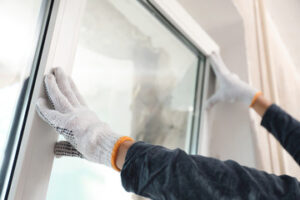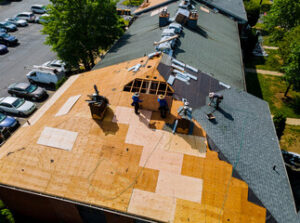Aurora CO Plumbers solve problems with water and sewage systems. These are essential services that everyone needs, so plumbing is considered a “recession-proof” career.

The demand for plumbers is high, and many tradespeople have the opportunity to set up their own independent businesses. There are also a number of different routes into the trade, including completing an apprenticeship.
Clean water is essential for human health. Plumbers play a vital role in safeguarding clean water supplies at home and in communities by installing and maintaining plumbing systems that prioritize waste reduction and conservation. They also help to reduce the risk of contamination from harmful bacteria and chemicals that can enter the water supply, ensuring that homeowners have access to safe and healthy drinking water.
The pipes that run throughout a house connect the faucets, appliances, and toilets with the main water source. These pipes are known as the water distribution system. When pipes are damaged, clogged, or otherwise impacted, it can cause problems with water flow, temperature, and sanitation. Plumbers install and repair these distribution systems to ensure that homes have reliable, uninterrupted water service.
In addition, plumbers are responsible for installing and repairing wastewater systems. This includes drain lines that carry wastewater to the sewer or septic tank and back-up systems that prevent sewer backflow into homes. Plumbers also help to maintain a proper balance between water consumption and available freshwater resources by implementing conservation practices like reducing water wastage and using energy-efficient appliances and fixtures.
Water conservation is an important task for plumbers, as less than one percent of the world’s water is drinkable. Only about a third of the freshwater is easily accessible, and it’s mostly located in lakes, rivers, reservoirs, and aquifers. The other two-thirds is salty or otherwise unusable, which makes water conservation a major concern. Plumbers can contribute to this effort by installing low-flow faucets and showerheads, fixing leaky pipes, and educating households on how to conserve water.
Plumbers can further protect the water quality of their customers by installing and repairing filtration systems. These systems remove impurities like sediment, chlorine, and heavy metals from the water, ensuring that homeowners have access to clean, healthy drinking water. In some cases, plumbers can even help to improve the water quality of a community’s water supply by performing services like backflow prevention and water treatment.
The world’s population is growing, and there are already a number of threats to our water supply. However, technology and innovation offer promising solutions for preserving clean water in the future. By implementing environmentally friendly plumbing technologies and developing innovative ways to reuse water, plumbers can contribute significantly to the preservation of the planet’s most precious resource.
Waste Disposal
Garbage disposal systems help keep homes clean and hygienic, but they can run into problems such as jamming or odors. Plumbers are trained to diagnose and repair these issues, as well as provide maintenance and advice to prevent them from recurring. This ensures that the system is functioning properly and efficiently, and it also saves homeowners from costly repairs in the future.
One of the most important things that plumbers do is educate consumers on responsible waste disposal practices. This is because disposing of waste correctly can help prevent clogs, leaks, and other plumbing problems in the home. It can also improve and extend the life of the plumbing system.
Plumbers are also responsible for identifying and managing hazardous materials such as lead solder, asbestos, and mercury, which can have long-term detrimental effects on human health and the environment. They also promote sustainable and eco-friendly products and solutions that can reduce the impact of plumbing on the environment.
Licensed plumbers track and evaluate garbage disposal performance through regular assessment protocols, which helps them identify and correct inefficient operation patterns before they become a serious problem. They also recommend high-quality, durable replacement parts that are designed to minimize environmental sustainability impacts and maintain optimal system performance levels.
Many people are unaware that it is not safe to put certain items into the garbage disposal. Putting hard objects into the disposal like bones, pits, or citrus peels can cause the blades to be damaged. Additionally, putting fats and oils down the drain can cause them to solidify and block the sink. Plumbers are trained to help consumers avoid these issues by educating them on proper disposal habits.
If your garbage disposal is giving off a bad smell, try pouring a cup of baking soda down the drain followed by a cup of vinegar. This will help to break down any food residue and eliminate the odor. Another option is to grind a handful of ice cubes and some salt into the disposal, which will help sharpen the blades and eliminate any odors. Another way to keep your disposal running smoothly is to use hot water when you are using it. St Paul Pipeworks recommends that you continue to run the water for about thirty seconds after the grinding noise stops to ensure that any remaining waste is pushed into the P-trap.
Sustainable Health
In addition to cleaning water and ensuring waste disposal is done correctly, plumbers also play an important role in promoting sustainability. For instance, they can recommend high-efficiency fixtures and encourage the use of green energy sources for heating and cooling systems. This reduces the strain on local freshwater supplies and minimizes the pollution of waterways.
Another key aspect of plumbing is preventing and managing water damage, which can have a direct impact on human health. For example, if a leaking pipe bursts during a cold winter storm, plumbers can help residents restore their water service quickly. This prevents costly damage and ensures the safety of occupants.
Many leading plumbing businesses are embracing sustainability as a business principle by encouraging community involvement and philanthropy. This can be in the form of offering free plumbing services for those in need or partnering with non-profit organizations on social projects. This initiative has the potential to revolutionize the industry and instill a sense of pride in plumbers as agents of change making significant societal contributions.
Lastly, plumbers can also contribute to sustainability initiatives by educating their customers on how to save water and avoid plumbing emergencies. This can include explaining the benefits of water-saving innovations such as touchless faucets and toilets, which are designed to conserve water while improving hygiene by reducing contact points.
While clean water may seem like an abundant resource in our society, it’s important to remember that not everyone has access to safe drinking water. As such, it’s vital for plumbers to support sustainability initiatives to promote the availability of clean drinking water around the world.
Whether it’s repairing burst pipes during a cold winter storm or resolving a flooding crisis, plumbers are the heroes who keep our homes and communities safe. As such, it’s crucial for plumbers to continue advancing sustainable plumbing practices to ensure a healthy and secure future for all. With continued advancements in technology, environmental responsibility and user satisfaction, plumbers have an exciting opportunity to shape the world’s future for generations to come.
Job Satisfaction
When it comes to job satisfaction, plumbers rank among the highest of all tradespeople. A study by IronmongeryDirect found that 62% of plumbers say they are satisfied with their jobs and find them meaningful. The ability to overcome challenges, achieve technical mastery, and bring solutions to urgent problems offer intrinsic rewards that keep many plumbing professionals motivated throughout their careers.
The fact that plumbers directly impact people’s lives also offers a sense of purpose to the profession. Every day, plumbing professionals ensure that homes and businesses have access to clean water and functioning waste systems to prevent health risks. They also contribute to sustainable living practices by promoting efficient water usage and reducing environmental degradation. This deeper sense of meaning amplifies the pride in one’s craftsmanship and contributes to overall happiness and contentment with their work.
Another factor that influences job satisfaction for plumbers is their work environment and their relationship with colleagues and customers. Having access to well-maintained tools and equipment, a safe working environment, and a supportive team of coworkers can contribute to a positive attitude towards work. Conversely, a negative work environment, lack of support from supervisors, and difficult client relationships can significantly reduce job satisfaction for plumbers.
In addition to these factors, plumbers’ personal life often has a direct impact on their job satisfaction. In many cases, they have to endure long hours and unpredictable schedules, which can interfere with their personal lives and create feelings of stress and fatigue. The physical demands of the job, such as working in confined spaces and lifting heavy objects, can also make it hard for plumbers to enjoy other activities outside of work.
Finally, the flexibility of the plumbing industry means that many skilled plumbers are able to start their own businesses once they gain experience and confidence. This shift from being an employee to an independent business owner can be very rewarding and provide both professional satisfaction and financial security. In addition, it allows plumbers to pursue their passions and focus on projects they are passionate about. This can lead to greater creativity and a higher level of satisfaction for their work.

